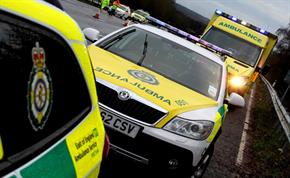Date:
19 April 2024
Page URL:
https://ntk.eastamb.nhs.uk/news/a-look-at-channel-202-and-the-critical-care-desk.htm?pr=
A look at channel 202 and the critical care desk

Every day we respond to patients who have traumatic injuries or who would benefit from specialist care at scene.
Whilst day to day most of you won’t go to many of these types of incidents, when you do it is good to know how the system works - and how you can get the specialist support you and your patient might need.
The critical care desk (CCD) is responsible for identifying emergency calls that might benefit from a specialist response from HEMS (air ambulance teams), BASICs (doctors) and the Trust’s critical care paramedics. The clinicians on CCD look through the system and actively ring back 999 callers to identify incidents across the region where the patient would benefit from a specialist resource intervention. However, sometimes the nature of the incident or extent of the patient’s injuries aren’t clear until we’re on scene; that’s where you come in, as in these instances you can contact the CCD via channel 202 on your airwave radio to request specialist support.
The CCD will be able to select the best response for you and your patient, and give an estimated time of arrival. They can also update the specialist team on the patient’s injuries before they reach the scene, so they are better prepared when they arrive – your help in keeping the CCD updated on the patient is really helpful and appreciated.
Supporting the CCD is the incident command desk (ICD) ,which is responsible for mobilising the hazardous area response team (HART). The ICD can be contacted on channel 1 of your airwave radio.
Published 20th March, 2017
